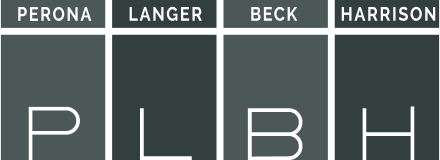Lifting injuries are common in many industries, especially in physically demanding jobs like construction, warehouse work, and healthcare. If you’ve sustained an injury while lifting at work, you may be entitled to workers’ compensation benefits to cover your medical expenses and lost wages. However, proving that your injury is work-related is key to securing the compensation you deserve.
Common Types of Lifting Injuries
Lifting injuries can vary in severity, but some of the most common types include:
- Back injuries: Strains, sprains, and herniated discs are common when lifting heavy objects improperly or repeatedly.
- Shoulder injuries: Rotator cuff tears and shoulder dislocations often result from lifting objects overhead.
- Knee injuries: Lifting heavy objects can place stress on the knees, leading to ligament or cartilage damage.
- Hernias: A hernia can occur when a person lifts something too heavy, causing part of an internal organ to push through a weakened spot in the surrounding muscle.
These injuries can limit your ability to work, making it important to file a workers’ compensation claim to recover physically and financially.
Steps to Take After a Lifting Injury
If you experience a lifting injury at work, taking the right steps can strengthen your workers’ compensation claim and help ensure that you receive the benefits you’re entitled to.
1. Report the Injury to Your Employer
Immediately after your injury, report the incident to your employer. This step is critical because workers’ compensation claims often have strict deadlines. Be sure to provide details about what you were lifting, how the injury occurred, and the symptoms you experienced. Delaying your report could weaken your claim and make it harder to prove that the injury was work-related.
2. Seek Medical Attention
After reporting the injury, seek medical care as soon as possible. Your doctor will evaluate the severity of your injury, recommend treatment, and document the connection between your injury and your job duties. Accurate medical documentation is essential when proving a workers’ compensation claim, so follow your doctor’s advice and keep detailed records of your treatment.
3. Document the Incident
In addition to seeking medical care, documenting the incident can help support your claim. Some ways to do this include:
- Keeping a record of the specific task that led to the injury
- Taking photos of the equipment or object you were lifting
- Collecting witness statements from coworkers who saw the incident
- Maintaining a journal of your symptoms and how the injury affects your ability to work
Proving Your Lifting Injury Is Work-Related
One of the key challenges in a workers’ compensation claim for lifting injuries is proving that your injury was caused by your job duties. Here are some strategies that can help strengthen your claim:
1. Show a Clear Link Between the Task and the Injury
Your claim will be stronger if you can show a direct connection between the lifting task and your injury. For example, if you injured your back while lifting a heavy object as part of your job responsibilities, make sure to explain this clearly in your report and medical records. The more specific you are about how the injury occurred, the easier it will be to establish the link.
2. Provide Medical Evidence
Medical documentation plays a crucial role in proving any workers’ compensation claim. Make sure your doctor’s notes clearly state that your injury is work-related. If your doctor determines that your injury was caused by repetitive lifting over time, this should also be documented. Be sure to keep copies of all medical bills, prescriptions, and treatment plans as part of your claim.
3. Address Potential Challenges
Sometimes workers’ compensation claims are denied because the insurance company argues that the injury was pre-existing or occurred outside of work. If you’ve had a previous injury or medical condition, it’s important to show that your current injury was caused or worsened by your job duties. You may need additional medical opinions or expert testimony to prove this.
How PLBH Can Help
Navigating the workers’ compensation process after a lifting injury can be complex, especially when proving that the injury was caused by work. At PLBH, we specialize in helping injured employees with their claims, ensuring they receive the benefits they need to recover. Our legal team can assist with:
- Gathering evidence to support your claim
- Ensuring your medical records accurately reflect the work-related nature of your injury
- Representing you in any disputes or appeals if your claim is denied
If you’ve been injured while lifting at work, contact PLBH at (800) 435-7542 for a consultation. We’ll help you navigate the workers’ compensation process and fight for the benefits you deserve.

